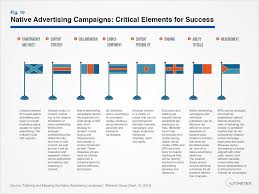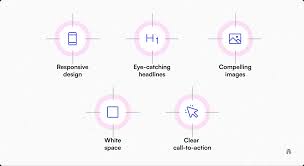Native advertising started as a “subtle” mention of a brand in a movie, book, or play. Now it’s useful content that helps build trust in a brand.
What is Native Advertising
Pros and Cons of Native Advertising
Types and formats of native advertising
Placement areas
How to choose a platform for native advertising
How to evaluate the effectiveness of native advertising
Expert advice
What is Native Advertising
Table of Contents
Roman scrolls through his social media feed on a chilly winter evening and sees:
● a banner advertising vitamins;
● a post from his favorite media outlet, “10 ways to avoid getting sick during cold season.”
Most likely, Roma will simply skip the banner. But he might read the post: half the office is already on sick leave, and he doesn’t want to join them. And this media usually publishes sensible advice that has already helped him.
The third point in the post is taking vitamin D. Roman is interested and orders a jar for himself — the marketers’ goal has been achieved. And the post about 10 ways to fight a cold is native advertising for vitamins.
Native advertising is a method of covertly promoting a product or service without a direct call to purchase using material that is perceived as part of the author’s content on the site.
Read Also:What is Asianismo?
Pros and Cons of Native Advertising
Benefits of native advertising:
✅ Cannot be blocked
About 26% of users enable ad blockers on their computers and smartphones. Native advertising on the Internet cannot be bypassed. And ideally, you won’t even want to.
✅ Reaches the target audience directly
If you select a media with a suitable target audience , you can get a large reach among your potential customers. For example, this is what the TV channel “Children’s” did, placing a native publication in the media for parents “N-E-N”.
✅ The brand gets a reputation as a media or opinion leader
People trust media that they regularly read, watch, and listen to. Therefore, recommendations from a familiar source look more reliable. The native advertising format for bloggers works on the same principle . For example, the cosmetic blogger RedAutumn has gathered a fairly loyal audience on her channel and regularly sells advertising placements to brands.
Disadvantages of native advertising:
❌ Expensive
Native advertising is not cheap. For example, if we want to place native on vc.ru, we can buy placement directly from the platform. Their website has such a price list.
Prices for content placement may vary greatly across different platforms . For example, native integrations from well-known bloggers may cost several million rubles.
❌ It is not always possible to assess financial efficiency
Let’s look at two integrations from the Knife magazine:
1. MegaFon digital card. In the material about cashback there is a button with a clear target action: apply for a card.
2. Geekbrains service. The large material about the work of the future has a lot of interactivity, cards and a test. But the peculiarity of this native advertising is that there is no target action: all links lead to the service website, without a call to buy something specific. This type of native integration is called image.
❌ Requires a lot of time and resources
Native publications are usually prepared in several stages, and they often require experts. For example, Praktikum created an email newsletter with native integration of the Golden Apple. To release the material, the editor found the contacts of five specialists from different departments, interviewed them, and compiled everything into a letter. Work on the content took more than a month.
Even if you order a turnkey integration, the customer may need to make efforts: find experts, cases, collect statistics and check the material for factual errors.
Types and formats of native advertising
We examined the main content formats with examples of native placements.
Product placement
The oldest form of native advertising is hidden advertising in movies, books, radio, and even on works of art. One of the first possible examples is the image of Bass Brewery beer in Edouard Manet’s painting “Bar at the Folies Bergère” — it appeared back in 1882.
News
A short format of native advertising is a text about some event in the world of a product or service. For example, the Xiaomi technology brand bought an ad placement in the feed of the article aggregator vc.ru to tell about the promotion. Here, technology lovers are expected to take part in a quest.
Article
Brands can post articles on third-party resources or create their own blogs and media to promote products.
Now you can check the effect of native advertising from the article.
In the course “Internet Marketer” experienced mentors will teach you to understand all types of advertising, choose platforms that match your goals and audience, and most importantly, evaluate and improve the effectiveness of advertising campaigns.
Author’s material
Texts in which the authors or experts are the company’s managers and employees. They can provide comments that are integrated into the article or write a column. For example, the company “Gazinformservice”, which deals with business cybersecurity, published an expert article on the RB.ru platform about how to properly manage databases.
Cards
The information is presented in a concise form — each card answers a specific question. They are often used for complex products that need to be understood. For example, the Snob magazine together with the Mir payment system made partner cards on how to get 10 rubles cashback for trips paid for with a Mir card through the Face Pay service.
Tests, quizzes, game content
An interactive content format that can be useful or entertaining. Readers answer questions on the topic or play a game, at the end are the results and a link to the advertiser, often with a promo code. Here again is the magazine “Knife” and native integration with the Samsung brand.
Here’s another project – an interactive game where you can try yourself in the role of a detective
Review
The article’s heroes share their personal experience of using a product or service. The brand hopes that a detailed and honest story will encourage readers to buy.
Podcast
A separate episode, series, or entire podcast about what the brand understands. For example, Kaspersky Lab launched a podcast about cybersecurity on Yandex Music.
Post or story
Bloggers sell advertising space on their social networks – here, for example, is native advertising for VTB Bank in the author’s Telegram channel about marketing news.
Integration
A video blogger inserts a piece of advertising for another brand into his video, natively (or not so natively, as luck would have it) leading up to integration. An example is blogger Sir Troglodyte, who usually shoots videos about the game HOMM III, who integrates a story about another game into his video.
There are several options for native integrations:
● Talking head
The blogger himself talks about the product, shares his experience of using it or just his opinion.
● Sketch
The blogger films a short story and places it inside the main video.
● Brand integration
The blogger reads the text and inserts footage sent by the brand.
Placement areas
We have collected basic platforms where you can make effective placements. But in fact, if a marketer has enough imagination and budget, anything can become a platform for placing native advertising – from a restaurant receipt to graffiti.
1. Media.
Newspapers, magazines, any online publications. To understand whether a resource works with native advertising, it is enough to look at the media kit – a presentation that the media provides on the site in the “Advertisers” section.
2. Social networks.
Bloggers have many tools for native advertising. You can find a suitable blog using special services, such as Getblogger , or select relevant pages manually.
3. Services for listening to podcasts.
For example, Yandex Music or VKontakte Podcasts .
4. Video hosting.
Native advertising on YouTube is one of the main ways for video bloggers to monetize their channel, since direct advertising is not available in Russia.
5. Movies, music videos and other media content.
Such platforms are suitable for large brands with impressive budgets. Such integrations are usually negotiated with companies that produce stars and movies.
Read Also:Allod Sports – Revolutionizing the World of Athletics
How to choose a platform for native advertising
These tips are suitable for those who are choosing a platform for the first time and have not worked with native advertising before.
1. Define the goal In general
native advertising is suitable for image campaigns with impressive budgets. But for placements where a quick and cheap result is needed, this is not the best option.
Let’s say you need to attract visitors to a webinar. This can be done in two ways:
● pay a lot of money for a really cool article and embed a registration form in it. The target audience will read it, and X people will register in this form – leads.
● launch targeted advertising in social networks for the same target audience: people will be shown a banner with a button that leads to a landing page with a registration form. The company will also receive X leads from this advertising.
It seems that both options are equally effective. But targeting cost Y rubles, and native advertising cost 10Y rubles. And it turns out that attracting one lead from native advertising costs 10 times more. It is more profitable to use targeting here.
Of course, there are exceptions, but native advertising is usually used when it is necessary to:
1.● quickly make a new audience loyal;
2.● strengthen reputation through cooperation with a certain platform;
3.● increase brand awareness and other brand metrics.
2. Define the target audience you want to work with, depending on the goal.
This is an obvious but most important step in working with integration – all the following steps depend on it.
3. Identify platforms with a suitable target audience.
Often, in target audience research conducted by brands, there is a separate question: “What do you watch, listen to, and read?” Based on these answers, you can make an initial list of media and look for similar options.
If there is no such research, you will have to take the long way: select several media, relying on intuition, and look through their media kits and “For advertisers” sections – there is information about the audience. There are special services for analyzing the target audience of bloggers, for example, trendhero .
Next, you need to compare your audience with that of the media or blogger. If the match is significant, you can take the platform into work. In total, you need to collect 2-3 options.
4. Look at the cases.
Most likely, they will be there, in the “For advertisers” section. If they are not there, you can search for them yourself: type in the search on the site or posts “promo”, “partner”, “advertisement” or just look through them. You need to save the cases that you liked the most, so that you have examples at hand at the negotiation stage.
5. Find out the prices and target KPIs.
The most labor-intensive stage, because in most cases this data is not freely available. You will have to contact managers and systematize the information yourself. In addition to the cost of different integration options, it is worth asking for guarantees: what coverage and conversions the partner promises. Here you need to compare prices, KPIs , match with the target audience and choose an option.
6. Conduct final negotiations.
You need to contact the media manager and discuss the idea with them. The manager will most likely offer several implementation options, topics and different formats. You can try to talk about a discount, but they are rarely given – only if you take package publications or become a regular customer.
How to evaluate the effectiveness of native advertising
To correctly evaluate the effectiveness of an advertising campaign, you need to adhere to the following principles:
● Evaluate the campaign no earlier than a month after launch
The material must be indexed and pass through a sufficient amount of traffic – readers, viewers or listeners. For example, a video blogger’s video should collect an average number of views on the channel.
● Consider the goal of the campaign
Image advertising should not be evaluated by sales, and vice versa – do not consider the increase in brand awareness as the main indicator for placement, which contains a promo code for direct purchase.
● Pay attention to unique impressions, views, scrolls and reader engagement
All this data is available in Yandex Metrica and Google Analytics. The advertising platform must provide the company with a report on the campaign.
Here is a fragment of such a report: metrics for the placement of a native article. Here are the platform guarantees, which became the planned indicator, and the actual placements exceeded the plan by almost two times..
● Use UTM tags or promo codes to track the customer’s path and understand where they came from
For example, such a link is embedded in the advertising we are already familiar with.











